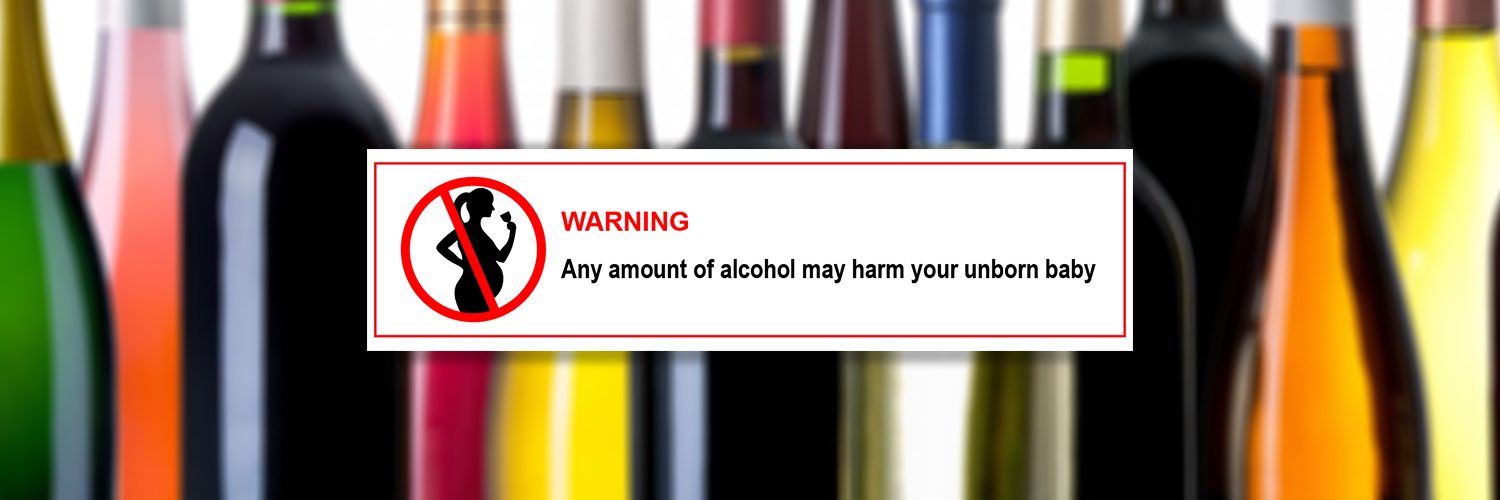Currently in Australia, alcohol companies are not required to include pregnancy warning labels on their products. Instead, they are free to choose whether or not to include any information about the harm of alcohol and pregnancy on their labels.
Later this year, Australian and New Zealand Governments will decide on whether to mandate alcohol pregnancy warning labels on all alcohol products. The outcome of this decision will have a significant impact on the health of many current and future citizens of both countries.
Alcohol consumption during pregnancy is associated with a range of adverse consequences including miscarriage, stillbirth, low birth weights and Fetal Alcohol Spectrum Disorders (FASD).
FASD is associated with physical and emotional developmental delay, impaired speech and language development, learning problems and difficulty controlling behaviour. The effects of FASD are lifelong.
The evidence is clear: alcohol causes birth defects. All alcohol crosses the placenta. There is not a safe time during pregnancy when damage to the fetus will not occur.
No amount of alcohol has been proven as safe.
Health professionals agree that no amount of alcohol is safe for an unborn child. The alcohol industry doesn’t care to deliver that message#NotGoodEnoughhttps://t.co/tWbkZUFSsV pic.twitter.com/6WvvcUJWZN
— FARE (@FAREAustralia) June 26, 2018
Unfortunately, research shows that awareness of this advice remains low, with one in five Australian women continuing to drink alcohol after becoming aware of their pregnancy. Data from the 2016 National Drug Strategy Household Survey (NDSHS) found that only 56 per cent of pregnant women reported that they abstained from alcohol during pregnancy.
A new Hall & Partners research report commissioned by the Foundation for Alcohol Research and Education (FARE) has investigated people’s understanding and interpretation of the two most commonly used consumer information message labels for alcohol and pregnancy.
The study comprised focus groups of women who were pregnant or trying to conceive, their male partners, and female peers. Each participant reviewed current alcohol pregnancy health warning labels and discussed their beliefs relating to alcohol consumption during pregnancy.
What it found was deeply concerning.
The report revealed that while the existing social norm is for women to avoid alcohol during pregnancy, some believed that consuming small amounts of alcohol occasionally was not harmful.
Of the products reviewed, the pregnancy health warning messages were generally considered too small to effectively attract consumer attention.
The research also found that the current warning pictogram – which is supposed to inform people that pregnant women should not consume alcohol – did not challenge the belief held by some, that consuming small amounts of alcohol occasionally during pregnancy is unlikely to cause harm.
Disturbingly, the research also indicated that the wording of the current text warning, “it is safest not to drink while pregnant” may actually reinforce this misinterpretation.
The alcohol industry has shown it cannot be trusted to self-regulate.
It can’t be allowed to continue to deliberately manipulate and mislead consumers#NotGoodEnoughhttps://t.co/tWbkZUFSsV pic.twitter.com/qVlMBsE9MD— FARE (@FAREAustralia) June 21, 2018
The report concluded that warning labels could be enhanced by combining the pictogram with a warning text to better communicate the dangers of alcohol consumption during pregnancy in such a way that credibly challenges existing beliefs.
The report also concluded that enhancing the size, position, and presentation of the warning (for example, the colour and contrast to the background) would attract greater consumer attention.
Research including the latest study by Hall & Partners, tells us that a best practice pregnancy warning label should:
- Always show both the pictogram and working text together
- Be in bold text
- Have a border and/or white space around it
- Be positioned prominently next to commonly viewed information
- Occupy a sufficient proportion of the product/label
- Use a contrasting colour to the background or surrounding information
- Use red to signify danger
- Include a signal word such as ‘warning’
Off the back of this research, FARE has commenced a campaign for mandatory pregnancy warning labels, which highlights the six years of repeated negligence from the alcohol industry.
After six years of an ineffective voluntary scheme for pregnancy warning labels on alcoholic drinks sold in Australia it's time for mandatory labels that look like this. https://t.co/HHhI3KCGjm#publichealth #alcohol pic.twitter.com/2O9bcePBeX
— Public Health Association Australia (@_PHAA_) June 26, 2018
FARE argues that the current voluntary scheme created by the alcohol industry has served only to confuse and mislead consumers and that for the past six years under the voluntary scheme, the industry has been getting away with pregnancy warning labels that are hidden, misleading, too small, or missing entirely.
The industry has deceived consumers for far too long.
Under the current system, alcohol companies are not required to include pregnancy warning labels on alcohol packaging. Instead, the system is a voluntary ‘opt-in’ process, allowing alcohol companies to mislead consumers over the dangers of drinking during pregnancy.
A warning label that does not properly raise awareness about the harm alcohol does to unborn babies is irrelevant to consumers and merely a public relations exercise for the alcohol industry.
FASD is an entirely preventable but incurable condition, and mandatory warning labels on alcohol products is a cost-effective method of informing consumers about health risks.
It is time to put people before profits.








Add comment